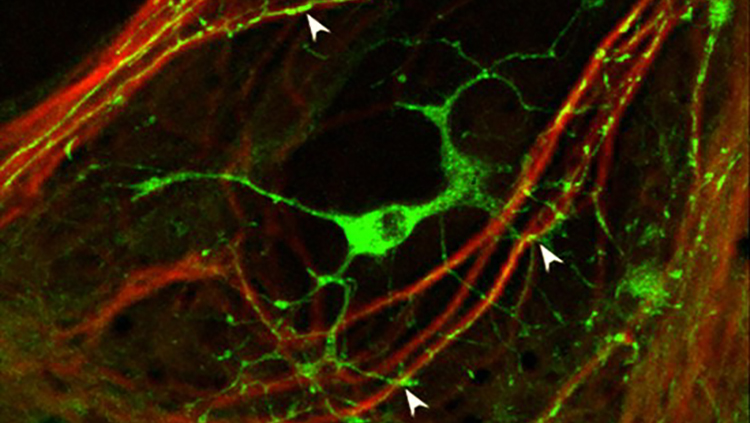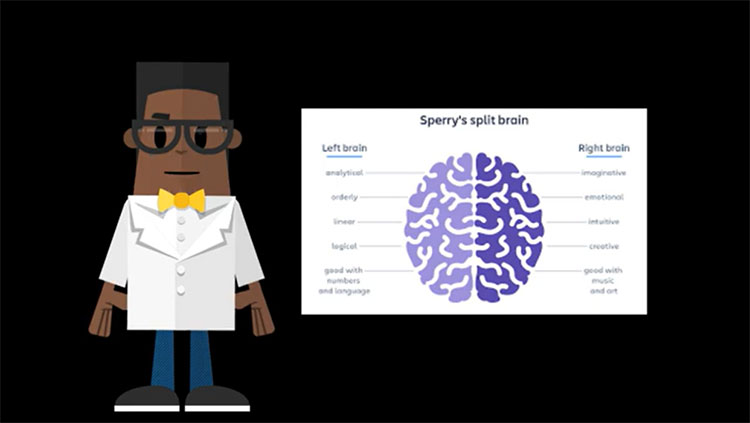Neural Electricians
- Published25 Sep 2017
- Reviewed25 Sep 2017
- Author Charlie Wood
- Source BrainFacts/SfN

The nervous system uses electrical and chemical signals to relay messages all over the body, and that takes impeccable wiring. What keeps those signals quick and coherent is myelin, the fatty insulation that wraps around the axons of neurons like rubber or plastic covers metal wires in your home.
Myelin is produced by support cells called oligodendrocytes, pictured here in green. One oligodendrocyte can wrap up dozens of axons (labeled in red above), eventually producing as much as one hundred times its own weight in myelin, some estimate. This image shows the beginnings of that process. The white arrows indicate where wispy oligodendrocyte tendrils have begun latching onto axons.
Myelination (the sheathing process) starts in the first months of life, but if you’re under 30 years old, it might not be quite done yet. The brains of those who lose this protective coating may have trouble getting signals out to the body, resulting in diseases like multiple sclerosis.
CONTENT PROVIDED BY
BrainFacts/SfN
Also In Anatomy
Trending
Popular articles on BrainFacts.org


















